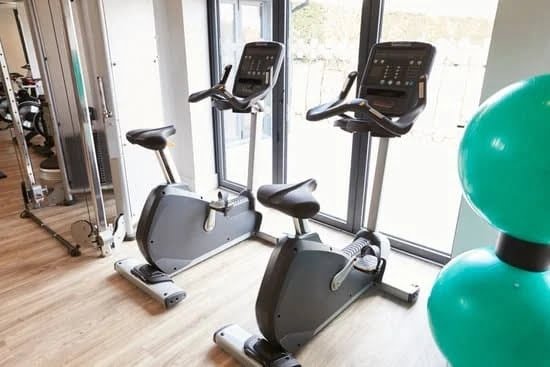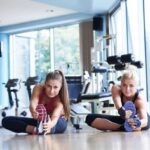Incorporating Interaction
Personal training group fitness provides an excellent way to get exercise while also encouraging more interaction with an instructor and other members of the group. Group members are able to cheer each other on, ask questions and give tips along the way. At a personal training session, the main focus is always on every person in the group as individual progress and needs are addressed. Every member of the group will receive personalized instruction tailored to their own particular goals and abilities. The instructor can also offer motivation for people in the group when needed, which helps create a stronger bond between individuals. The positive atmosphere created by exercising together enables each person to push themselves harder so that they can achieve their goals faster than if they were exercising alone. When this occurs within a group setting, it creates a stronger sense of community among the participants and encourages increased interactions within the group which make exercise more enjoyable for everyone involved.
Discussing the Equipment
Personal training group fitness can involve a wide range of equipment. Common pieces of equipment include free weights, dumbbells, barbells, kettlebells, resistance bands and medicine balls. Resistance-training aids like lifting machines or battle rope also form part of a personal training group fitness session.
Free weights are typically used to build and strengthen major muscle groups while dumbbells and barbells can target muscles in the arms, chest, legs and core. Kettlebells are often incorporated into exercises that require dynamic and explosive movements like swings or snatches to engage multiple muscle groups and help build strength, stability and endurance. Resistance bands come in various strengths and can be used for a range of pulling or pushing exercises to work targeted muscle groups in the arms, shoulders, back and legs. Medicine balls are normally used as an implement for explosive movements like partner throws or double-arm slams which helps develop strength in the entire body.
The range of personal training group fitness equipment available enables trainers to continuously challenge participants to perform exercises that test muscular endurance, power output and coordination levels – all with the aim of inspiring individuals to reach their health and wellness goals.
Understanding Different Levels
When engaging in personal training or group fitness sessions, there are different levels of intensity that can vary depending on an individual’s experience and capacity. For instance, for a beginner, the exercises and intensity may be lower than for someone with more experience. It is important to accurately assess the level needed for each individual when planning a session.
For those with little to no physical experience or those recovering from injury or illness, lighter exercises may be prescribed so as not to overload their muscles and cause further harm. This includes exercises such as stretching and breathing techniques which can increase flexibility and range of motion. As the individual becomes more experienced, the exercises can gradually become more challenging including bodyweight movements such as squats and push-ups as well as weights if appropriate.
The same principles exist when designing a program for group fitness participants. A well-thought-out program should include modifications to encourage participants of multiple abilities while still working towards defined goals. For example, during a sprint conditioning class, sprinting stops could be included instead of sprints so that beginners can still participate without overloading their body; this will also help improve endurance over time and support better performance in more advanced classes down the line.
Adding Another Benefit
Personal training group fitness provides an atmosphere of accountability for each individual member of the class. There is a shared sense of commitment among the members and the coach, so when someone misses a session they know they are not just letting themselves down, they are letting down other members as well as the instructor. This can help to motivate members to stay on track with their daily exercise regimen. Additionally, accountability in group fitness classes helps create a stronger team dynamic between members and instructors. Members become even more comfortable with one another over time and gain confidence that if they need assistance with any aspect of their training program, their coach and fellow teammates will be there to help them keep on track and work towards achieving their personal goals.
Expanding Additional Topics
Safety Tips:
• Drink plenty of water before, during and after your workout.
• Wear appropriate workout clothing and supportive shoes.
• Pay attention to your posture and avoid straining yourself.
• Use good technique when performing exercises in order to prevent injury from any sudden movements or over stretching.
• Make sure you have enough space around you to work out safely, without interfering with other fitness participants.
• Warm up with light cardio for 5–10 minutes before beginning your session in order to get your muscles prepared for the workout and limit risk of injury.
• Strengthen opposing muscle groups equally in order to achieve balance in your movement and avoid strain or muscle fatigue/imbalances .
• Cool down properly at the end of each session in order to reduce risk of lactic acid buildup which can lead to soreness and cramping post-workout.

Passionate about providing useful information to anyone with an interest in the field of Personal Training, I strive to pass on to our readers quality information and to answer any questions about Personal Trainers, the work they do and how to become one.





